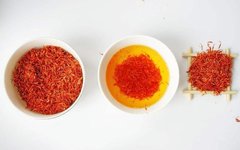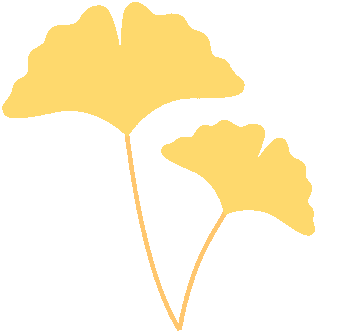
Carthamus (Safflower)
Safflower (Scientific name: Carthamus tinctorius L., also known as grass safflower or red-blue flower) is a plant belonging to the Asteraceae family. The medicinal part used in Traditional Chinese Medicine (TCM) is its dried flowers, which are harvested in summer when they change from yellow to red, and then dried in the shade or sun.
This flower is native to Central Asia and is widely cultivated in countries such as China, Russia, Japan, and Korea. Depending on the region, the variety produced in Sichuan is referred to as“Chuan Hong Hua” (川红花).

In TCM, safflower is considered to have a spicy flavor, a warm nature, and is associated with the Heart and Liver meridians. It is known for its ability to invigorate blood circulation, regulate menstruation, and alleviate pain. It is commonly used for conditions such as amenorrhea, dysmenorrhea, retained lochia, abdominal masses, chest pain, and traumatic injuries. This herb has a strong blood-invigorating effect and should not be used excessively; pregnant women should use it with caution.
“Invigorates blood and moistens dryness, alleviates pain and disperses swelling, regulates menstruation.” — Compendium of Materia Medica
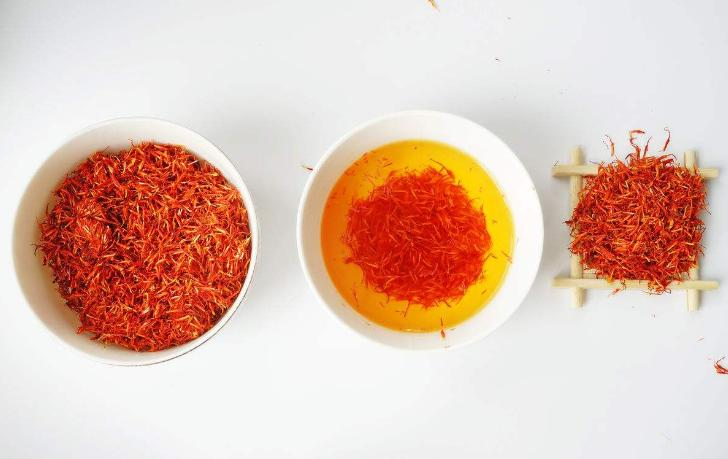

Crocus Sativus (Saffron)
Saffron (Latin name: Crocus sativus L., also known as Western saffron or saffron) is a monocotyledonous plant belonging to the Iridaceae family. It is native to Southern Europe and is commonly cultivated throughout China. Its main uses include medicinal, culinary, horticultural, and dyeing purposes.
Saffron is a well-known precious medicinal material, with the main medicinal part being the small stigmas. The flowers are harvested in summer when they change from yellow to red, and the dried stigmas are used raw.
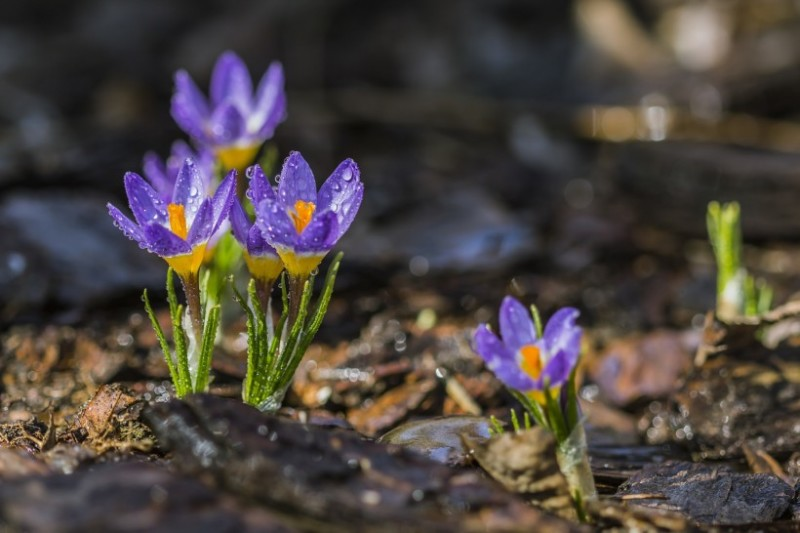
In TCM, saffron is considered to have a sweet flavor, a neutral nature, and is associated with the Heart and Liver meridians. It can invigorate blood circulation, cool the blood, detoxify, and calm the mind. It is commonly used to treat menstrual irregularities due to blood stasis, retained lochia after childbirth, pain from blood stasis, traumatic injuries, febrile diseases with rashes, depression, and palpitations.
“Stigmas are used for liver diseases, blood disorders, and to nourish the body.” — Chinese Tibetan Medicine
“Stigmas clear liver heat and nourish the body; treat all liver diseases.” — Tibetan Materia Medica
“Stigmas are used for traumatic injuries, pain from blood stasis, menstrual blockage, liver qi stagnation, chest pain, postpartum abdominal pain, restlessness, blurred vision, and forgetfulness.” — Medicinal Records of the Tibetan People

Differences Between Safflower and Saffron
Different Families:
Safflower belongs to the Asteraceae family, with ovate-lanceolate leaves that have spiny serrated edges. The flower heads are entirely tubular flowers, initially yellow but gradually turning red. Its flowering period is from June to July; fruiting occurs from August to September.
Saffron belongs to the Iridaceae family, with bulbous corms that are flattened and covered with a brownish-yellow membranous sheath. It flowers in late October, with flowers that open during the day and close at night. The flower stems are very short and do not protrude above the ground, with flower colors ranging from pale blue, red-purple, to white, and they emit a distinctive fragrance.

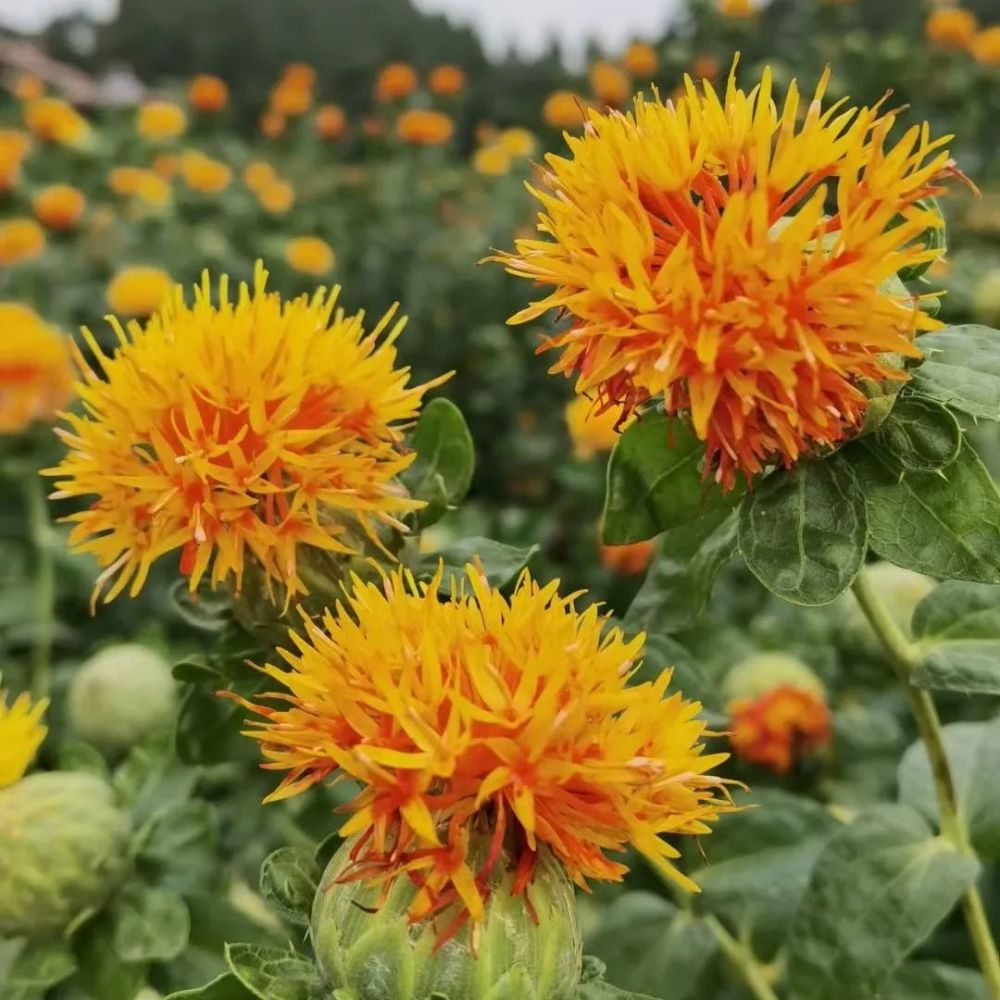
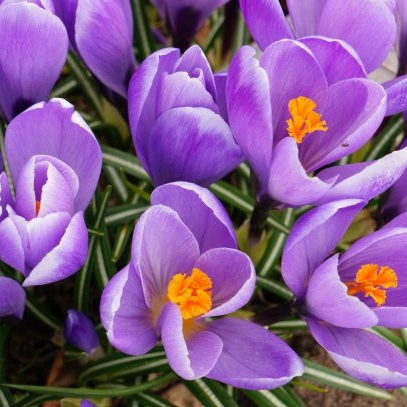
Safflower (left) and Saffron (right)
Different Origins:
Safflower is a plant of the Asteraceae family that was introduced to China from the Western Regions, with the main production areas currently in Xinjiang and Sichuan.
Saffron is native to the Mediterranean region of Europe and is said to have been introduced to China via the Silk Road, where it is cultivated in various regions. Since ancient times, saffron has been widely used in the West as a medicinal herb, spice, or dye.
Different Colors, Scents, and Flavors When Brewed:
The powder of saffron is orange-red, and when added to water, it shows an orange-yellow color that descends in a straight line and gradually spreads, dyeing the water yellow without any sediment and without any plant odor.
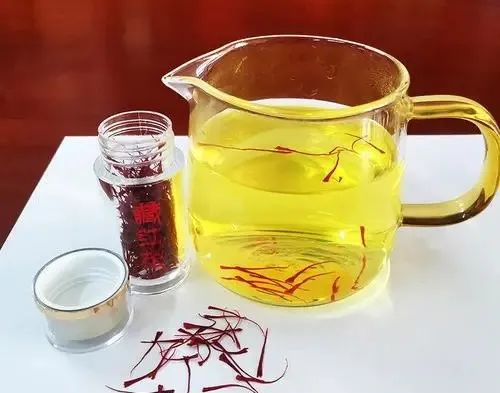
The powder of safflower is orange-yellow, and when added to water, the color is distinctly different from saffron, and it also has a noticeable scent.
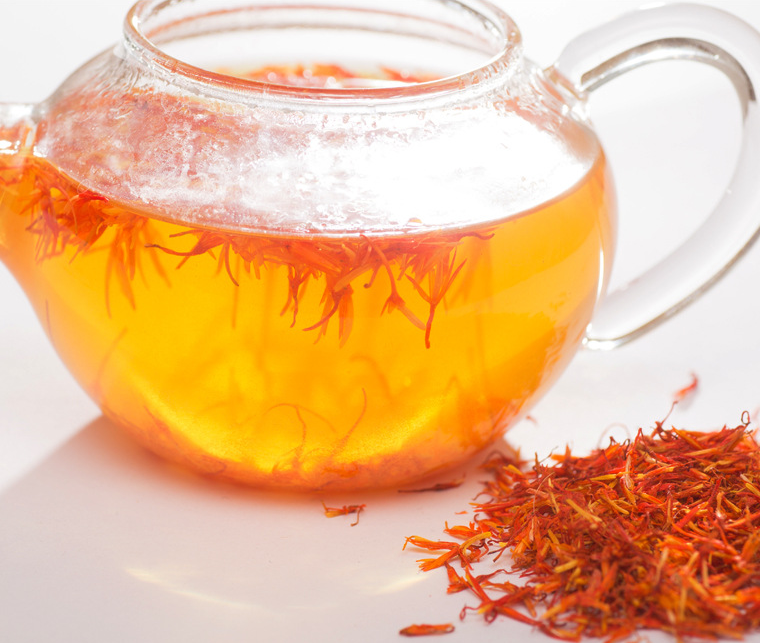
Significant Price Differences:
Saffron is significantly more expensive than safflower. The high price of saffron is due to the fact that only the stigmas are used medicinally, and its yield is extremely low. Additionally, its limited resources contribute to its high cost, which is why saffron is often referred to as “plant gold.”

Different Recommended Dosages:
The recommended medicinal dosage for safflower is 3-10 grams, while for saffron, it is 1-3 grams.
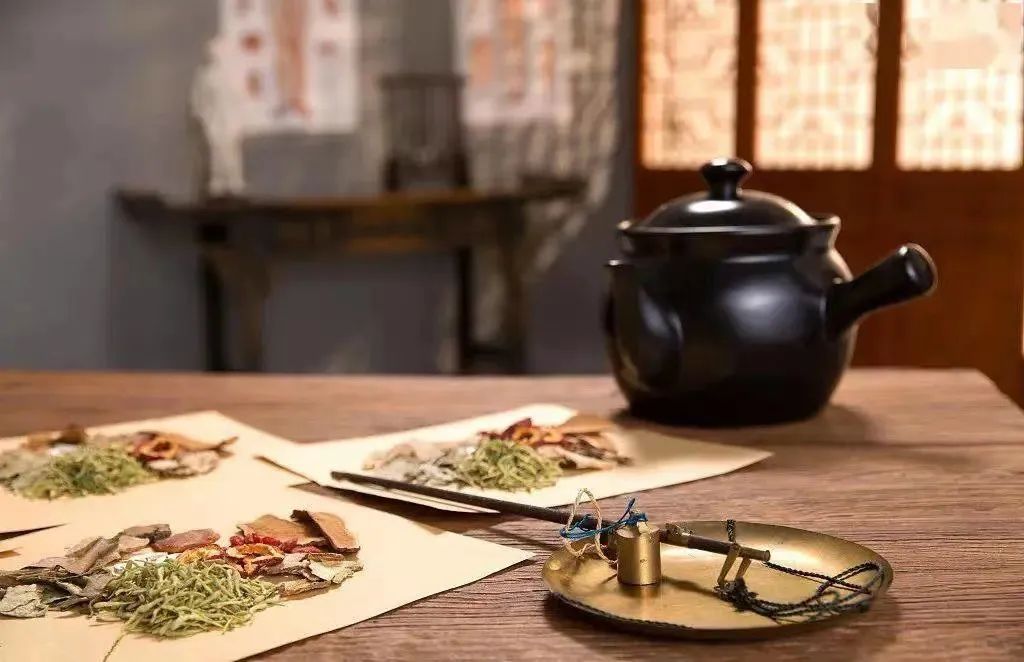
Special Reminders:
1. Friends who spend a lot of money on saffron should note that using 3-4 or even 7-8 stigmas each time is far from reaching an effective dosage. 
2. Both saffron and safflower have strong blood-invigorating properties, and their use should be guided by a qualified TCM practitioner.

 Reposting is a form of motivation; sharing is a virtue.Finally, I would like to remind everyone that a healthy life requires daily maintenance. Please long-press the QR code below to follow “Innovative Health Talks,” and tune in here for 3 minutes each week, starting with reading a warm health science article.
Reposting is a form of motivation; sharing is a virtue.Finally, I would like to remind everyone that a healthy life requires daily maintenance. Please long-press the QR code below to follow “Innovative Health Talks,” and tune in here for 3 minutes each week, starting with reading a warm health science article.
Text/Chen Xin
Images/Source from the Internet







